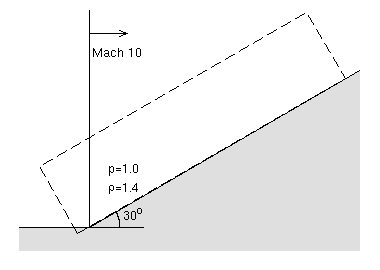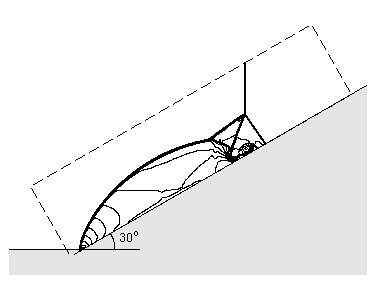Double Mach Reflection of a Strong Shock
Front Tracking for the Euler Equations of Gas Dynamics
|
This example is a classical test example dating at least back to the famous paper of Woodward and Colella: The numerical simulation of two-dimensional fluid flow with strong shocks, Journal of Computational Physics, 54, pp. 115-173 (1984). Consider the reflection of a planar Mach shock in air from a wedge. The setup is of a Mach 10 shock which initially makes a 60 degree angle with a reflecting wall (upper left). When the shock hits the sloping wall, a complicated shock reflection occurs. The wave pattern consists of two Mach stems with two contact discontinuities (lower left). In Figure 1 we show the density at time 0.2 computed by front tracking and dimensional splitting on the same three grids as used by Woodward and Colella (dx = 1/30, 1/60, 1/120). The number of equally spaced time steps are 35, 70, and 140, respectively. This corresponds to a CFL number between 2.0 and 3.5 An emulated Schlieren mpeg-movie is available for the simulation on the finest grid. Note for instance that there is no trace of post-shock oscillations in the simulation. In Figure 2 we show the similar calculations including one layer of adaptive grid refinement, using the same sizes for the coarse grid. Locally grid cells are refined by a factor 2 in each direction. The number of time steps are 70, 140, and 280, respectively. This corresponds to a CFL number between 2.0 and 3.5 relative to the fine grid. |
 
|
Knut-Andreas Lie <andreas@math.ntnu.no> Last modified: Fri Mar 20 09:26:24 1998